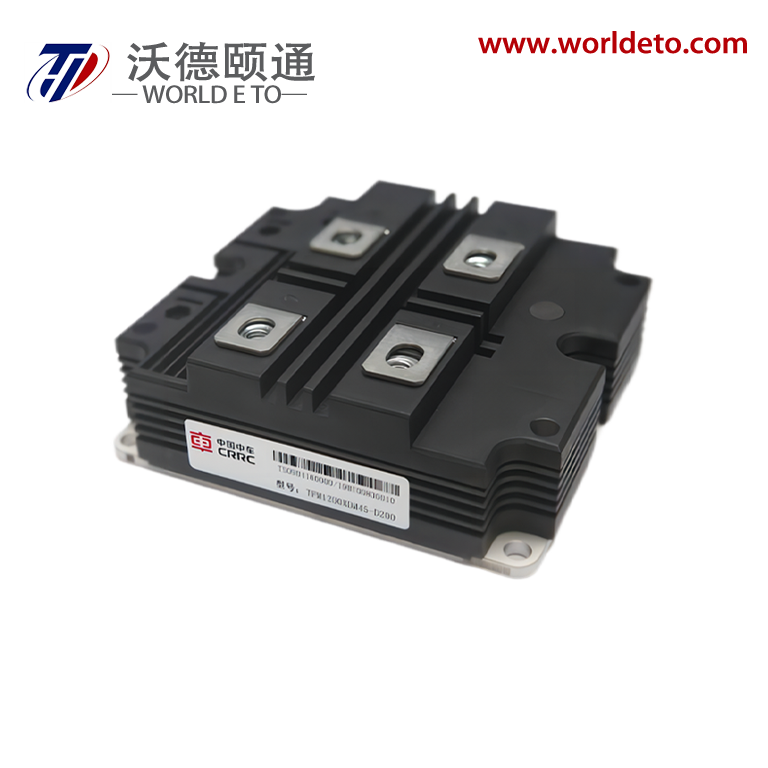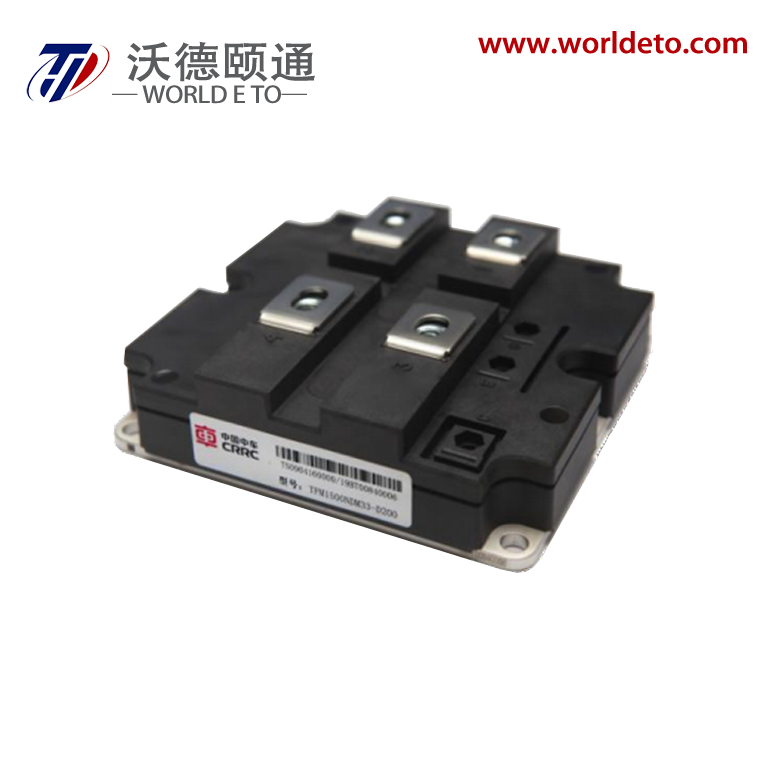فهم الدور الأساسي لوحدات الدايود في الإلكترونيات الحديثة
في المشهد المتغير باستمرار في الإلكترونيات القوية، وحدات الدايود ظهرت وحدات الصمامات الثنائية باعتبارها مكونات حيوية تُشكّل وظائف العديد من الأجهزة والأنظمة. وتُعدّ هذه المكونات شبه الموصلة اللبنات الأساسية لتحويل الطاقة وحماية الدوائر، حيث تؤدي دورًا لا غنى عنه في تطبيقات تتراوح بين المعدات الصناعية وأنظمة الطاقة المتجددة. ومع استمرار تطور التكنولوجيا، ارتفع الطلب على وحدات الصمامات الثنائية الفعالة والموثوقة بشكل هائل، مما يجعل من الضروري للمهندسين والفنيين فهم خصائصها واستخداماتها ومعايير اختيارها.
المكونات الأساسية وبنية وحدات الدايود
العناصر الهيكلية واعتبارات التصميم
تُعتبر وحدات الدايود الحديثة تجميعات متطورة تدمج بين مكونات متعددة تعمل بانسجام. في قلب هذه الوحدات، توجد رقائق شبه موصلة مثبتة على دوائر موصلة حراريًا، عادةً ما تكون من النحاس أو الألومنيوم. يتم تغليف التجميع داخل غلاف واقٍ يضمن عزلًا مناسبًا وتبديدًا فعّالًا للحرارة. كما يشتمل الهيكل الداخلي على تقنيات توصيل مثل الربط السلكي أو ما يماثله، والتي توفر اتصالًا كهربائيًا بين الرقائق والطرف الخارجية.
يُعد نظام إدارة الحرارة جانبًا حيويًا في تصميم وحدات الدايود، ويضم ميزات مثل المُشتتات الحرارية المدمجة ومواد واجهة الحرارة والمسارات الحرارية المصممة بدقة. تعمل هذه العناصر معًا للحفاظ على درجات حرارة تشغيلية مثلى وضمان موثوقية طويلة الأمد. قد تتضمن الوحدات المتقدمة أيضًا ميزات إضافية مثل أجهزة استشعار الحرارة والدوائر الوقائية التي تعزز من وظيفتها وسلامتها.
تصنيف القدرة وخِيارات التكوين
تتوفر وحدات الدايود بتصنيفات وقدرات مختلفة لتتناسب مع مختلف التطبيقات. تُعتبر التكوينات أحادية الطور وثلاثية الأطوار شائعة، حيث تتراوح تصنيفات التيار من بضع أمبيرات إلى آلاف الأمبيرات. كما يمكن أن تصل قدرة تحمل الجهد من مئات إلى آلاف الفولت، مما يجعل هذه الوحدات مناسبة لكل من التطبيقات منخفضة القدرة وعالية القدرة.
يمكن أن يختلف التكوين الداخلي لوحدات الدايود بشكل كبير، مع وجود خيارات تشمل التكوين نصف الجسري (Half-bridge) والتكوين الجسري الكامل (Full-bridge) والتكوينات المتعددة المتوازية. يوفر كل تصميم مزايا محددة من حيث قدرة تحمل التيار وعزل الجهد والأداء الحراري. إن فهم هذه التكوينات أمر بالغ الأهمية لاختيار الوحدة المناسبة لتطبيق معين. التطبيق .

التطبيقات في مختلف الصناعات
أنظمة الطاقة الصناعية
في البيئات الصناعية، تُعد وحدات الدايود مكونات أساسية في أنظمة تحويل الطاقة. وتُستخدم على نطاق واسع في محركات السرعة المتغيرة، ومحطات الطاقة الاحتياطية غير المنقطعة (UPS)، ومعدات اللحام الصناعية. تتطلب هذه التطبيقات مكونات قوية وموثوقة تكون قادرة على تحمل مستويات عالية من الطاقة مع الحفاظ على الكفاءة. صُمّمت وحدات الدايود الصناعية لتتحمل ظروف التشغيل القاسية، بما في ذلك التغيرات الحرارية، والاهتزاز، والإجهاد الكهربائي.
يعتمد قطاع التصنيع اعتماداً كبيراً على وحدات الدايود في مختلف العمليات، بما في ذلك التسخين الحثي، والطلاء الكهربائي، وأنظمة تصحيح معامل القدرة. تتطلب هذه التطبيقات وحدات تمتلك قدرات ممتازة لإدارة الحرارة وموثوقية عالية لضمان التشغيل المستمر في البيئات الصناعية الصعبة.
دمج الطاقة المتجددة
أصبح قطاع الطاقة المتجددة محركًا مهمًا لابتكار وحدات الدايود. تستخدم المحولات الشمسية هذه الوحدات لتحويل الطاقة الكهربائية المستمرة الناتجة عن الألواح الكهروضوئية إلى طاقة تيار متردد قابلة للاستخدام. كما تستخدم أنظمة طاقة الرياح وحدات الدايود في مراحل تحويل الطاقة الخاصة بها، مما يساعد على الحفاظ على استقرار الإنتاج رغم تغير ظروف الرياح.
تستخدم أنظمة تخزين الطاقة، التي أصبحت أكثر أهمية في منشآت الطاقة المتجددة، وحدات دايود للتحكم في عمليات الشحن والتفريغ. تتطلب هذه التطبيقات وحدات ذات كفاءة عالية لتقليل خسائر الطاقة وتعظيم الأداء العام للنظام.
معايير الاختيار والاعتبارات المتعلقة بالأداء
تقييم المعايير الكهربائية
يتطلب اختيار وحدة الدايود المناسبة النظر بعناية في مختلف المعايير الكهربائية. تعتبر قيمة هبوط الجهد الأمامي، ووقت استعادة الدايود العكسي، وقدرته على تحمل الجهد العازل عوامل حاسمة تؤثر على أداء الوحدة وكفاءتها. يجب على المهندسين تحليل ظروف التشغيل المتوقعة، بما في ذلك التيارات القصوى، والارتفاعات المفاجئة في الجهد، وتكرار التبديل، لاختيار الوحدات التي توفر هوامش كافية لضمان التشغيل الآمن.
تلعب خصائص المقاومة الحرارية للوحدات الدايودية دورًا مهمًا أيضًا في عملية الاختيار. تشير قيم المقاومة الحرارية الأقل إلى قدرة أفضل على تبديد الحرارة، وهو أمر بالغ الأهمية للحفاظ على تشغيل موثوق به تحت ظروف القدرة العالية. يجب تقييم درجة حرارة الوصلة المقدرة ودرجة الحرارة القصوى المسموح بها للغلاف بعناية لضمان قدرة الوحدة على تحمل متطلبات الحرارة في التطبيق المقصود.
عوامل الموثوقية وطول العمر
تتأثر موثوقية وحدات الدايود بعوامل مختلفة، بما في ذلك قدرة التحمل الحراري، وتحمل دورات التشغيل، ومقاومة الظروف البيئية. غالبًا ما تتضمن وحدات المصممة للتطبيقات الصناعية ميزات تعزز موثوقيتها، مثل تقنيات التعبئة المتقدمة والاتصالات الداخلية المتينة. يجب أن تتماشى الفترة المتوقعة لعمر الوحدة أو تفوق العمر المتوقع للمعدات التي سيتم تركيبها فيها.
تلعب إجراءات ضمان الجودة ومعايير الشهادة دورًا مهمًا أيضًا في اختيار الوحدة. يوفر المصنعون الموثوقون وثائق تفصيلية تتعلق بإجراءات الاختبار الخاصة بهم والامتثال للمعايير الصناعية. تساعد هذه المعلومات المهندسين على اتخاذ قرارات مستنيرة بشأن اختيار الوحدة بناءً على متطلبات الموثوقية.
أفضل الممارسات لتركيب الصيانة
الاعتبارات الخاصة بالتركيب والتبريد
يعد التركيب الصحيح لوحدات الدايود ضروريًا لتحقيق الأداء الأمثل وطول العمر الافتراضي. يجب أن تكون سطح التركيب نظيفًا ومُستويًا ومُعَدَّةً بشكل صحيح لضمان اتصال حراري جيد. يجب استخدام مواد مناسبة لواجهة التوصيل الحراري، ويجب الالتزام بدقة بمواصفات عزم الدوران الخاصة بالتركيب لتجنب الإجهاد الميكانيكي على الوحدة.
يتطلب تصميم نظام التبريد اهتمامًا دقيقًا بأنماط تدفق الهواء، وحجم المُبَرِّد (الرادياتير)، وجودة الواجهة الحرارية. في التطبيقات التي تستخدم التبريد بالمائع، يجب تحديد معدل تدفق المائع وخصائصه بدقة لتحقيق تبديد حراري فعال. يعد الصيانة الدورية لأنظمة التبريد ضروريًا لمنع تدهور الأداء بمرور الوقت.
استراتيجيات الصيانة الوقائية
يساعد الفحص الدوري والصيانة لتركيبات وحدة الدايود في منع الأعطال المفاجئة وتمديد عمر التشغيل. ويشمل ذلك التصوير الحراري الدوري لكشف النقاط الساخنة، والتحقق من التوصيلات الكهربائية بحثًا عن علامات تدهور، ومراقبة أداء نظام التبريد. يجب تدريب أفراد الصيانة على التعرف على الإشارات التحذيرية المبكرة للمشاكل المحتملة واتخاذ الإجراءات التصحيحية المناسبة.
تساعد وثائق أنشطة الصيانة واتجاهات الأداء في التنبؤ بالأعطال المحتملة ووضع جداول للصيانة الوقائية. يمكن لهذا النهج الاستباقي أن يقلل بشكل كبير من وقت تعطل النظام وتكاليف الصيانة مع ضمان تشغيل موثوق.
الأسئلة الشائعة
ما العوامل التي تؤثر على عمر وحدات الدايود؟
يتأثر عمر وحدات الدايود بشكل أساسي بدرجة حرارة التشغيل والدورات الحرارية والدورات الكهربائية والظروف البيئية. إن الإدارة الحرارية السليمة والتطبيق المناسب ضمن المواصفات المقدرة والصيانة الدورية هي عوامل رئيسية في تعظيم عمر الوحدة.
كيف أحدد متطلبات التبريد الصحيحة لوحدات الدايود؟
تُحدد متطلبات التبريد عن طريق حساب إجمالي خسائر القدرة ودرجة الحرارة القصوى المسموح بها في الوصلة ومعامل المقاومة الحرارية للوحدة. يجب أخذ عوامل مثل درجة الحرارة المحيطة والارتفاع وجودة الهواء بعين الاعتبار عند تصميم أنظمة التبريد. توفر كشوفات الشركات المصنعة خصائص حرارية تساعد في إجراء هذه الحسابات.
ما هي علامات فشل وحدة الدايود؟
تشمل العلامات الشائعة لقرب فشل وحدة الدايود زيادة في انخفاض الجهد الأمامي، وارتفاع درجات حرارة التشغيل، وأضرار فيزيائية مرئية، وضعف القدرة على منع التيار. ويمكن أن تساعد المراقبة الدورية لهذه المعلمات من خلال فحوصات الصيانة في تحديد المشكلات المحتملة قبل حدوث فشل كارثي.

